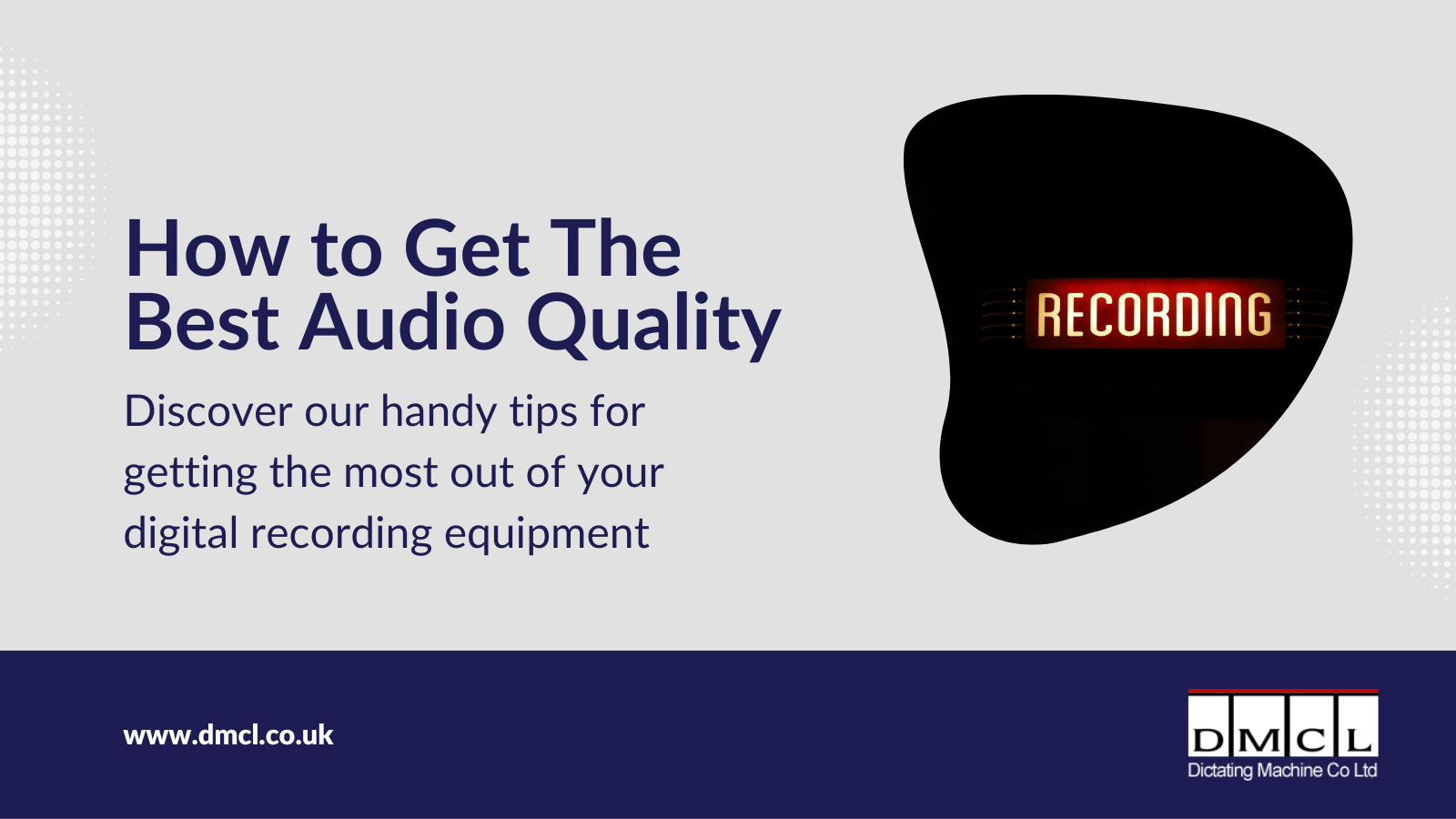
Here at DMCL, we’re all about ensuring you have the highest quality of audio recording possible - and with a catalogue of recording devices tailor-made to deliver the best possible audio when you need it, you’re half-way there. Still, there are ways to push that quality even further.
The difference between a professional and an amateur audio recording is usually in the sound quality. There are digital recording devices you can buy which are designed to minimise the typical issues that people experience when it comes to recording themselves - background noise, the chatter of other people in the environment, and distortion as a result of the sounds our mouths naturally make when we’re speaking. But if you want to achieve true excellence when it comes to recording, a few changes to your space - if possible - can make a world of difference.
Find the right space
Choosing the right place to record is crucial. If you can, try to find a quiet area to capture your voice - outside noises such as traffic and barking dogs can interfere with your recording. Many workspaces have isolation booths designed to block out external noise, and these are a great place to record. However, if you’re working from home or an office that isn’t set up for recording, any small space will do - the less room there is for sound to bounce around, the more clear your voice will be. A word of warning - bathrooms aren’t great, even though they’re often the smallest room in your house. The hard surfaces in your bathroom won’t absorb sound well enough, which means your microphone may pick up echoes as the sound bounces around the room.
Get proper equipment
Although your phone has a built-in microphone, it won’t be able to compare to the devices that are on the market, which have been designed to record flawlessly. Check out the Philips SpeechMike Premium, for example, which features a decoupled studio-quality microphone for precise recording, and a microphone grille with a structure designed to provide crystal clear sound. The Olympus RecMic II is another excellent example of microphone design, benefiting from an intelligent two-microphone system which focuses entirely on what you’re saying, cutting out all surrounding noise using the latest noise cancellation technology.
Use a Pop Filter (or practice the way you use plosives)
If you can track down a device that features a pop filter, you’ll be able to speak without worrying, because these block the wind noise of your mouth when you’re talking, along with all pop noises - particularly useful if you’re using speech recognition software to transcribe your dictations. There are a few digital recorders on the market which offer a design including a pop filter, but if you can’t find one, it might be a case of practising the way you speak - take care of sounds like ‘p’, ‘b’, ‘f’, ‘t’ and ‘s’, which can distort your recording.
Get in touch with our experts today to learn more about setting up the ideal recording space, and for recommendations on digital recorders that minimise common audio issues, or check out our full catalogue of products and services online.

